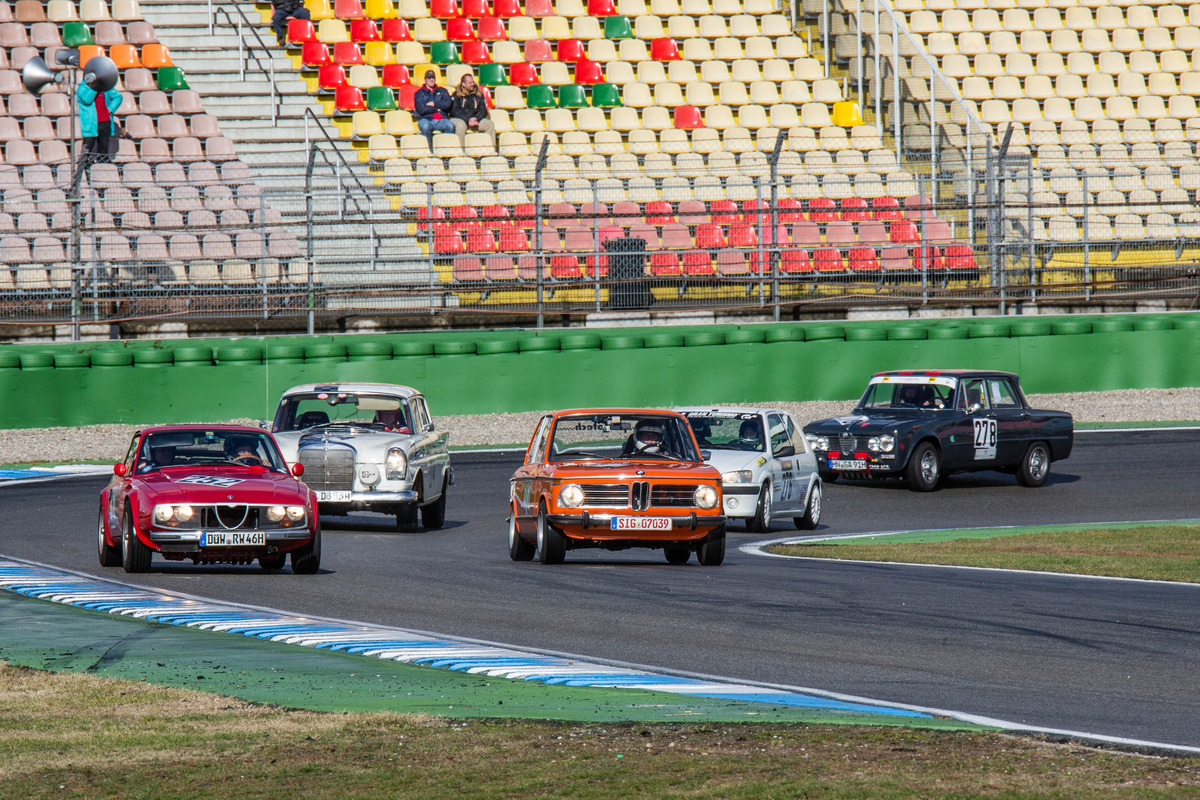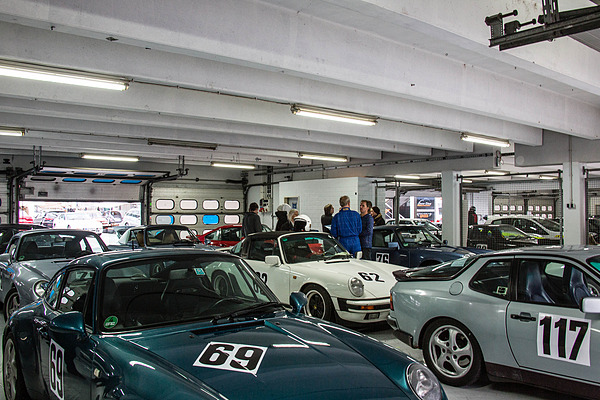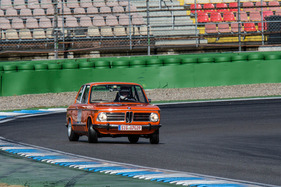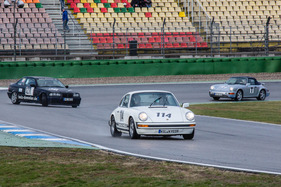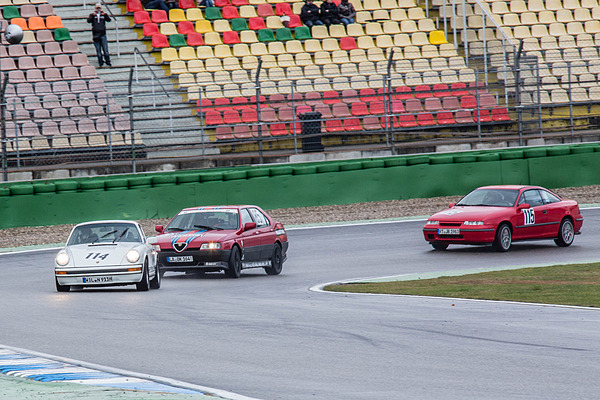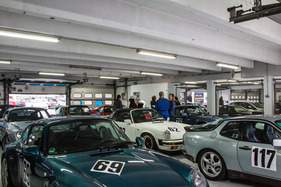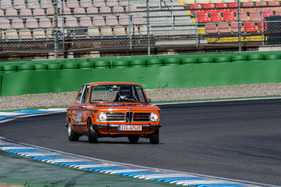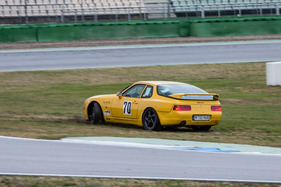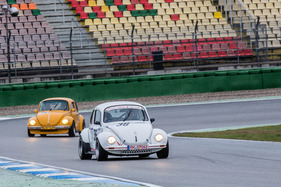Just before the snow starts to fall, things get academic: 2012 driver training in Hockenheim, the end of the season and the last oil warmer before the winter season.
In November, you can hardly save yourself from reports about the upcoming "Academic", practically everyone who represents a product on four wheels is talking about it: the names alone read like the "Who's Who" of privately organized one-make cups.
In 2012, there were several Alfa clubs (sorted by model and year), Audi enthusiasts, especially the A3 Quattro Forum, BMW, led by several 02 clubs, the De Lorean Club Deutschland, the Ford Focus RS Forum, several Beetle clubs, the Karman Ghia Forum, Mercedes enthusiasts such as the MSC-Ladenburg, various mini clubs, the Nissan 350Z drivers and almost a dozen Porsche enthusiasts' clubs, including the Elferliste, the 993 Forum, the Club für den klassischen 911 Südwest e. V. and the Zuffenhausen Club.V. and the Zuffenhausener Sportwagenfreunde.
But the event is also attracting a great deal of interest from cross-brand clubs, including regional motorsport clubs from the AvD to the Deutscher Sportfahrerkreis and Carpassion, as well as several event portals such as BlindAd and Nikon Fotografie. In any case, the physical presence of associations, some of which otherwise only operate virtually, is interesting.
History of the event in fast motion
The Academic Motorsport Club was founded in 1958 by students with gasoline in their blood at Stuttgart Technical University. The enthusiasm for the club has remained unbroken ever since: The club's own workshop, club transporters and the sports equipment available to members continue to generate a great deal of interest among students to this day.
2012 saw the 45th edition of the Academic Driving Training at the Hockenheimring. It was first held in 1966, and since then the club has organized the annual event for ambitious "Angasers" and those who want to become one.
The DMSB safety squadron guarantees a high safety standard. Semi-automatic exclusion applies to seasonal license plate drivers, as the event traditionally takes place at the beginning of November.
Motorsport for everyone
The two-part event offers hands-on motorsport for everyone. On the one hand, there is a driver training course for road-legal vehicles with a final regularity test, and on the other, a sports training course for touring cars, GTs and sports prototypes.
The scheme has also been tried and tested for 45 years. Those who have battled it out close to the series will then find great entertainment at a professional level - and vice versa.
Careful briefing
The briefing for all drivers of road-legal vehicles with theoretical and practical instruction offers everyone the opportunity to get to know their vehicle better at the Hockenheimring. The instructors also try to teach drivers how to drive the racing line without making mistakes. For the regularity test, the aim is then to adhere to a specified lap time as precisely as possible; deviations result in points being deducted.
Modifications to the concept are systematically implemented: You don't give a damn about uniformity and roll around the course with increasing speed as the number of laps increases; after all, the fun comes with driving and the routine increases quadratically with the number of laps. Scoring points becomes a gray theory and the joy of driving increases immensely. Generally speaking, drivers can spend a long time on the track for a handful of dollars. A taster course in racing for ambitious amateurs is thus possible in a very charming way.
Driving fun and meticulous measurement
In principle, however, all lap times driven are recorded, giving participants the opportunity to improve their driving style or suspension settings. The division into different performance classes not only increases safety by ensuring that the level of driving effort is largely equalized via the power-to-weight ratio.
Chasing laps shoulder to shoulder with reasonably equally fast and strong riders also guarantees maximum riding fun, as reasonably adequate competitors compete in every race.
In 2012, it was possible to come to the vehicle inspection on Friday evening, which many participants saw as a welcome relaxation program for the weekend. The hassle of arriving early on Saturday could be avoided and the Ringhotel with a view of the track was already full for Saturday breakfast. Professionalism is visible from afar: the number of camper vans in the paddock increases from year to year.
Well organized
The paperwork check is tightly organized, and last-minute entries of family members as co-drivers are clearly routine. The pits are increasingly filled with vehicles of all makes, hot drinks are in great demand, after all, the weather in 2012 is ideal for intensive testing of the wet grip of modern tire brands - at least it is not quite as freezing cold as the year before, when the marshals were able to build snowmen for their own edification.
The mandatory program is the driver briefing. An explanation of the route, driver briefing, safety regulations and flag lore are on the agenda, with the yellow and red striped flag in particular being warmly recommended for attention. The weather makes for thoughtful faces. Researching the limits of measurable water levels is not everyone's cup of tea. On the other hand, you rarely have the opportunity to explore the vehicle limits in the rain, as the natural frequencies at the limits are pleasantly low.
For the road-legal vehicles, the instructors drive ahead of the divided groups for four laps to introduce the course of the track and recommend the ideal line for comfortable use without obligation. After that, the aim is to maintain consistent lap times, with penalties for time deviations of more than three seconds. The standard lap times were lowered considerably in view of the weather, and yet only very few drivers were able to actually meet the target times.
Colorful starting field
The starting field is impressive, with a colorful hodgepodge of current and historic vehicles: fast Beetles and light Minis mix up the field just as much as many a skillfully piloted Alfa. In addition to the venerable tail fins in the field, the participation of a De Lorean is also remarkable, demanding a great deal of respect from the other drivers simply because of its rarity. The nimbus of the untouchable follows him from one lap to the next.
It's not just on the race track that there's something going on
Small events on the side of the track easily underline the side program. Those who are not driving can enjoy paddock entertainment at a high level. For example, Porsche full-time retiree Wolf Hendrik Unger, who had shone as a presenter at the sound night in the Porsche Museum just a few days earlier, delighted the waiting starters in the Audi of the DMSB relay team with a dedicated sound check against the ring fire department, from which he emerged a confident winner. And the heating subsequently worked much better in both vehicles than before.
Mild slips
Not all participants are able to leave the ring under their own power. The standard problem is numerous spins, especially in the Sachskurve area, which needs to be mastered with particular sensitivity in the wet. But such finesse is what makes the Hockenheimring so attractive. Thanks to the generous run-off areas, the field survives practically all research work off the racing line without any damage to the vehicle. Of course, this results in increasing amounts of gravel on the track, which in turn saves the marshals from freezing to death in boredom. In the afternoon, a leaking oil pan pretty much thwarts the possibility of successfully fine-tuning the braking points.
The participants in the second race are therefore well advised to work particularly carefully on the ideal line. The rehearsed braking points become less important than highly precise shift points, especially when downshifting. To be on the safe side, lap times tend to become more comfortable and everyone prays fervently that the person behind them will be a gentleman when it comes to the safety distance. However, not everyone finishes their run, for some the mirror-smooth course was simply too demanding - or the threatening gestures of those behind were too blatant.
From driving training to a drifting course
The Pistenclub from Nettetal , which gave its final performance at the Hockenheimring the following day, still had problems with the poorly grippy surface in the Sachskurve on the Sunday and generously changed its driver training course to a drifting course - admittedly in ideal training conditions. The academic event was also great fun as a high-level water sports event.
Just like a good wine, you can look forward to the next vintage. We recommend the homepage of the tireless organizers, Akademische Motorsportgruppe Stuttgart, e. V. ) for your attention. Parallel to the onset of the ice berry harvest for the wines, there will certainly be another driving training session in November 2013 under icy conditions, that much is certain. Just the thing for those with hot hearts.
